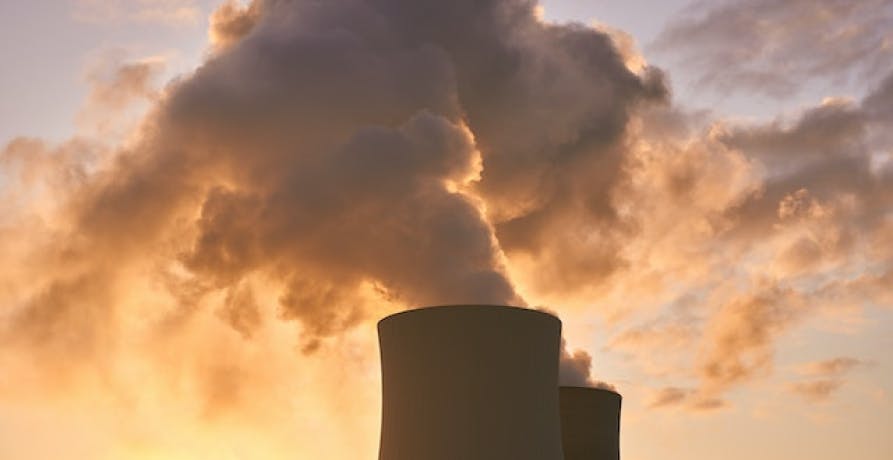
California Climate Accountability Package: SB253, SB261, & SB252
What is the California Climate Accountability Package, and how do SB 253 and SB 261 (SB 219), and SB 252 help the state work towards their environmental goals?
ESG / CSR
Industries



As investors seek to allocate their finances to companies demonstrating sustainability – more and more companies are starting to look for the best possible certifications to ensure their financial partnerships go through.
More often than not, companies seek to receive ISO certifications, such as the ISO 5001, ISO 9001, and ISO 14001 to improve the management of their business systems, their chances of attracting investors, and fighting against climate change.
In this article, we'll explain what an ISO 14067 is, the benefits of a life cycle assessment, how it is different from other ISO certifications, and how your company can receive one.
The ISO 14067 is an international standard that defines the requirements necessary for companies to qualify the carbon footprint of their products.
💡 Therefore, ISO 14067 correlates to the thirteenth Sustainable Development Goal in the UNGC’s Agenda 2030.
More people are checking the sustainability of the products they buy as an attempt to reduce their own individual carbon footprint, and an ISO 14067 demonstrates an organization’s willingness to comply with consumers. An ISO 14067 can help a company to better understand the carbon footprint of their product after it is no longer in the hands of the company.
👉 This can ultimately help a company seek new, innovative ways to reduce emissions – even when those emissions are no longer being created at the production site itself.

In comparison to other certifications available in the ISO series, such as the ISO 5001, ISO 9001, ISO 14001 – the ISO 14067 is the only certification in the ISO series that pertains to products specifically instead of an entire management system.
The other certifications in the ISO series all refer to establishing successful management systems relevant to environmental aspects or even social or economic aspects: such as a Quality Management System, otherwise known as a QMS with the ISO 9001 to help a company meet their regulatory and customer expectations, an Environmental Management System, otherwise known as an EMS with the ISO 14001 which can help organizations strive towards their environmental goals, and an Energy Management System with the ISO 5001 which can help businesses to improve their energy efficiency.
👉 All of the accreditation's in the ISO series help a company to improve their management and overall productivity, but each ISO certificate seeks to accomplish this overarching goal by focusing on an individual sector. Therefore, no ISO accreditation is more beneficial than the other – but they work best when all are individually, fully functioning.
An ISO 14067 doesn't tackle any management systems, but it still plays a pivotal role in any company seeking to establish greater measures for sustainability – as it tracks the emissions created throughout the entire lifecycle of a product, even after it is manufactured and sold.
💡 Think of the ISO series like a music band. Each instrument sounds fine on its own, but together they can sound incredible. A combination of ISO certificates works in the same way: they are more valuable together than they are on their own.

The life cycle of a product is the time span from which a product is initially created and presented to the consumer, until the purchase and disposal of the product.
Here are the four stages of a product's life cycle:
💡 Marketing and management teams monitor the life-cycle of a product to create the most optimal advertisements and price points, as well as any adjustments that can be made in order to appeal to consumers. In the case of an ISO 14067, the document specifies principles to help a company determine the sustainability and carbon footprint created throughout the product’s life cycle.

Carbon emissions may be most well-known for the factory they come from, but what happens after a product has left the shelf at the store is just as important – such as the greenhouse gases, carbon footprint, and other environmental aspects elicited as a result of the product's usage.
For example, given recycling is difficult and most products end up in the landfill anyways, companies need to take that into account. Even if the product is recyclable, many will still throw it in the trash – meaning that their product is emitting greenhouse gasses even after the consumer is finished with the product.
💡 An ISO 14067 can help prevent these continued emission-creating activities from occurring after a product is in the hands of the consumer with the promotion of raw material extraction, carbon offsetting, and encouraging other companies to pursue product life cycle accounting.
Everyone values reduced emissions and improved sustainability these days, such as stakeholders, investors, customers, and staff – are placing a higher importance on ESG values and sustainability.
👉 Certifications like an ISO 14067 can help a company to illustrate their dedication in the fight against climate change, as an ISO 14067 tackles scope 3 emissions that are no longer in the companies control.
| Benefit | Description |
|---|---|
| Enhanced Transparency | ISO 14067 helps companies provide clear and transparent information on the carbon footprint of their products, improving stakeholder trust and confidence. |
| Competitive Advantage | Companies that adopt ISO 14067 can differentiate themselves in the market by showcasing their commitment to reducing carbon emissions and promoting sustainability. |
| Regulatory Compliance | Adopting ISO 14067 can help companies stay ahead of regulatory requirements related to carbon reporting and environmental impact, ensuring compliance with current and future regulations. |
| Cost Savings | Identifying and managing carbon hotspots can lead to more efficient use of resources, resulting in cost savings through reduced energy consumption and waste. |
| Improved Stakeholder Relations | Demonstrating a commitment to reducing carbon footprints can improve relations with customers, investors, and other stakeholders who are increasingly prioritizing sustainability. |
| Risk Management | By understanding and managing the carbon footprint of their products, companies can better anticipate and mitigate risks associated with climate change and resource scarcity. |
| Access to New Markets | Companies that adhere to ISO 14067 may find new market opportunities in regions and industries that prioritize low-carbon products and sustainability. |

In addition to this, there are more benefits to be had for companies that acquire an ISO 14067. For instance, stakeholders will be thrilled to work with companies that aim to work with companies that make the greenhouse gas emissions created throughout the entire life-cycle of their product transparent.
An ISO 14067 can help customers filter which products are sustainable via the carbon footprint of products, which again – can help to reduce overall emissions in the long run. Products can continue to pollute after they’re in the hands of the consumer if they never get the chance to be sold in the first place. Therefore, an ISO 14067 also indirectly helps to boost the awareness of the importance of both ESG values and sustainability.
Acquiring an ISO 14067 can also help a company to discover their own ineffectiveness, contribution to waste, and create new cost savings opportunities that would have otherwise gone unnoticed without full understanding on the environmental impact of a product’s lifecycle. Ultimately, an ISO 14067 can help reveal where improvements can be made and lead to more aspirational environmental goals for the company.
The transparent nature of an ISO 14067 can also help a company to better understand their risk management, and adding to the beneficial building blocks of other ISO certifications that seek to improve the other management systems within an organization.
👉 An ISO 14067 can clearly help any company seeking to become more sustainable and reduce their carbon footprint with an effective and progressive response to a product's carbon footprint. The question is – how difficult is it to acquire an ISO 14067?
Given an ISO 14067 is the only accreditation in the ISO series to pertain specifically to the carbon footprint of products across a wide variety of sectors – it’s a desirable accreditation for any company seeking to grow to acquire.
👉 However, does the difficulty of receiving an ISO 14067 make it less appealing for companies to take the steps to be awarded an ISO 14067?
Similar to the rest of the certifications a part of the ISO series, there are usually several steps that a company must take in order to be accredited with the ISO certification desired. For instance, as ISO 14067 deals with the greenhouse gas emissions created by a product, a company has to engage in several steps with paperwork and online forms to ensure the sustainability of their products to be awarded an ISO 14067.
However, whether your company seeks the help of a third party or not – it is still beneficial to gather all of your documentation that you would present to a third party regardless, so that there is a starting point for what improvements need to be made before acquiring an ISO 14067.
💡 If you do seek a third party for assistance, following the submission of your preliminary documentation – the third party will usually verify if those papers are sufficient enough to receive an ISO 14067. If so, the papers can be sent and the third party will award your company with the ISO 14067 to be renewed at a later date in time.

Similar to the other certifications in the ISO series, an ISO 14067 can be difficult to prepare an application for – however, and ISO 14067 can be indispensable for your company.
People who buy a face wash or a candle aren't thinking about how the Quality or Environmental Management Systems are running of that company are running – they're thinking about what's right there in front of them.
Some cosmetic brands are starting programs where customers can bring back their empty containers and refill them with their favorite products at a discount. This helps to create transparency, build customers trust and satisfaction, while also helping the company to reduce their carbon footprint in the long-term.
This can help to ensure to customers that the manufacturing processes of their favorite products make a genuine effort to practice:
💡 The ultimate end goal, whether it be a loaf of bread or a more sustainable company – is indispensable as it can benefit in other areas: such as increased interest from investors who can put even more money into a company trying to make the world a better place.
It's like a collection, and the more ISO certifications your company can collect – the better. The ISO 14067 isn't one you want to miss out on.
If reading this article about an ISO 14067 has made you interested in reducing your carbon emissions to further fight against climate change – Greenly can help you!
At Greenly we can help you to assess your company’s carbon footprint, and then give you the tools you need to cut down on emissions. We offer a free demo for you to better understand our platform and all that it has to offer – including assistance with boosting supplier engagement, personalized assistance, and new ways to involve your employees.
Click here to learn more about Greenly and how we can help you reduce your carbon footprint.
